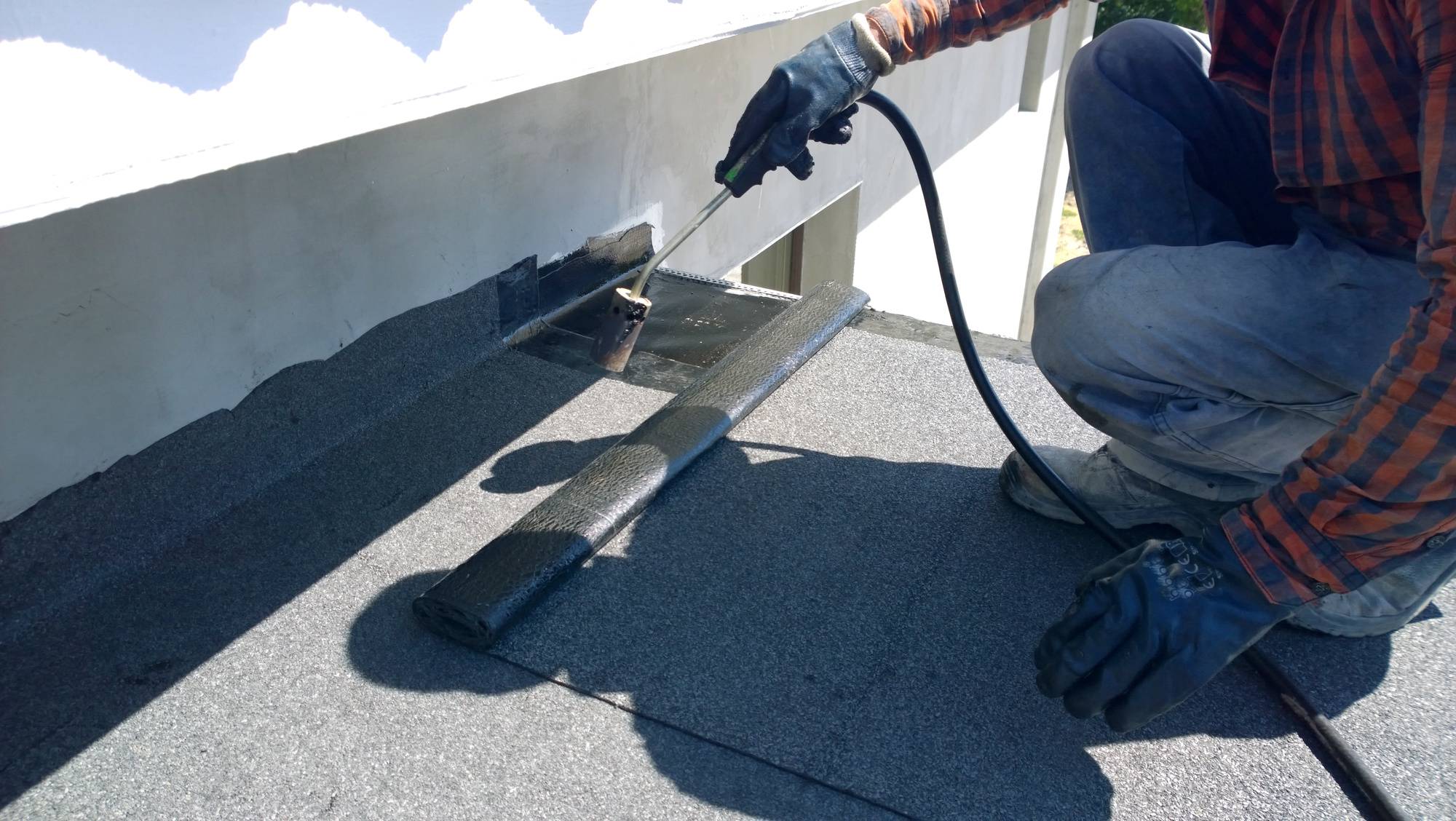Alongside the age of big-ticket items like HVAC systems and energy-efficient windows, the roof’s condition plays a big part in determining the value of a commercial or residential property.
If it’s time to replace your old asphalt flat roof, you might be considering upgrading to roofing membranes. These new technology roofing systems have been on the market since the 1960s, are longer-lasting, and offer increased efficiency and weather protection.
Are you curious about the manufacturing and benefits of a rubber membrane roof or systems like single-ply, PVC, and TPO? If you’re not sure where to start when it comes to your research, we’ve got you covered. Read on!
What Is a Roofing Membrane?
In membrane roofing systems, a watertight cover shields the entire surface of a flat or gently sloped roof and building interior from the elements. They’re made from various plastic materials, including rubber, PVC, and acrylic.
Flat roofs are typically seen on medium-sized to large commercial buildings, from gyms, office buildings, and schools to warehouses and factories. This is because they allow for the installation of venting for heating and cooling systems and roof access points.
They’re also increasingly being used on homes with contemporary designs, especially with the rapid rise in residential solar installation. Additions like rooftop gardens and terraces are also increasingly popular on houses in urban areas, where outdoor space is hard to come by. It’s much easier to install these features on flat roofs than sloped.
Types of Roofing Membranes
Built-up roof (BUR) membranes were the industry standard for centuries. Today, the use of BUR is fading fast due to environmental and health concerns. A plethora of synthetic materials are replacing this once-popular option for securing a flat roof.
When it comes to single-ply membrane roofs, it’s all in the name. These popular roofing systems feature a single layer of continuous membrane that tightly covers a flat roof to prevent water infiltration.
They are made of various materials, including TPO, PVC, or EPDM, and last decades with little maintenance. Professional roofers most often install single-ply roofing membranes on commercial buildings.
EPDM Membrane Roof
One of the most commonly used roofing membranes today is the ethylene propylene diene monomer (EPDM) rubber membrane. When you hear roofing professionals mention rubber roof membrane, they’re likely referring to this popular thermoset roof material.
EPDM roofs are typically black to prevent UV damage, or white, to prevent the sun from heating a building’s interior. This long-lasting system comes reinforced or non-reinforced and is usually either 45 mm or 60 mm thick.
PVC Membrane Roof
Polyvinyl chloride (PVC) roof membranes are typically reinforced for extra durability and are available in thicknesses ranging from 45 mm to 90 mm. They feature heat or chemical welded seams and can be fastened to a roof in various ways. They’re often used below green roofs and rooftop gardens because they resist the growth of plant roots, mildew, and bacteria.
TPO Membrane Roof
Another commonly used roofing membrane material is thermoplastic polyolefin (TPO). TPO membranes typically come in white and are available in various thicknesses, from 40 mm right up to 100 mm.
As with PVC membranes, there’s a lot of installation flexibility with TPO. Building owners can choose from a ballasted, fully adhered, or mechanically fastened membrane.
Though early versions of the TPO membrane had issues with durability, better formulas were released in the 2000s. Just be sure to check the material and installation warranty terms when investing in this type of roofing system.
KEE Membrane Roof
Ketone ethylene ester (KEE) roof membranes are relatively new to the roofing industry. They were developed to replace PVC, which is vulnerable to decay over long periods of use.
This reinforced roofing material is most often white, though you might see other colors. It comes in fewer thicknesses than other materials. It’s fastened to a flat roof using fully adhered, ballast, mechanical methods.
When buying a KEE roofing membrane, check that it has more than 50% polymer content to ensure you’re getting an authentic KEE roof.
Benefits of Roofing Membranes
While each flat roof membrane material has its unique advantages (and disadvantages), they all have some benefits in common. Probably the best reason to choose a flat roof membrane roof is that it’s an affordable option. But it’s also highly durable, quick to install, and can even be the greener choice!
Some benefits of roofing membrane include:
- Waterproof membrane for roof
- Durability in extreme weather
- Highly affordable
- Quick and easy to install by a professional
- Requires little maintenance
- Can be stepped on
- Easy to clean
- Energy efficient
- Reduces heating and cooling costs
- Fits in with existing rooftop structures
- Some membranes can be recycled
If installed correctly in the first place, flat roofing membranes will last decades before needing to be replaced. Be sure to schedule regular yearly checkups and cleanings and make repairs recommended by your roofing professional.
Best of all, the ROI on a new roof averages around 60 percent. Given the energy savings and weather protections flat roof membranes also provide, it’s easy to see why they’ve replaced traditional asphalt.
Roofing Membranes for Residential or Commercial Use
Whether you want to add solar panels to your building or just keep the wild weather at bay, roofing membranes offer you the flexibility to do anything you want with your roof. And at the same time, they’ll keep the roof protected from moisture infiltration and general wear and tear. Best of all, these systems are among the most affordable and long-lasting on the market today.
Are you in the market for a new roof? If you live or work in Effingham, IL, and surrounding communities, get in touch with MidState Roofing today. They offer free inspections and assessments for roof replacements and can also assist with roofing maintenance.

